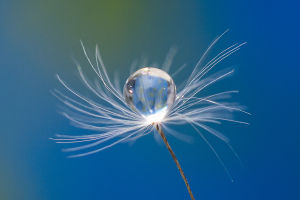As the pace of modern life accelerates, more and more people cultivate potted plants at home or in the office. Potted plants beautify the environment, purify the air, increase indoor humidity, and enhance the comfort of living and working spaces.
However, ensuring that these green plants thrive is not a simple task. Below are some key considerations for indoor plant care, which can help you better take care of your plants and ensure their healthy growth.
1. Choosing the Right Plants
Choosing plants that are well-suited to indoor environments is crucial. Not all plants are suited to grow indoors. Common indoor plants such as Monstera, Pothos, Spider Plants, and Lucky Bamboo are highly adaptable and have low light and humidity requirements, making them ideal for indoor cultivation.
On the other hand, plants that require a lot of sunlight, such as cacti and lavender, are better placed in areas with plenty of sun. Choose plant varieties that match your indoor lighting conditions and personal preferences.
2. Proper Light Management
Light is one of the fundamental conditions for plant growth. Most indoor plants require bright, indirect light rather than direct sunlight.
Plants that need more light should be placed near windows, but avoid direct sunlight to prevent leaf burn. Plants with lower light requirements, such as Pothos and Ivy, can be placed in shadier areas.
Additionally, during winter when daylight hours are shorter, you may need to supplement light with artificial sources such as grow lights. These lights can provide the necessary spectrum for plants, promoting photosynthesis and healthy growth.
3. Suitable Temperature and Humidity
Most indoor plants thrive best at temperatures between 18-25°C (64-77°F). In summer, avoid exposing plants to prolonged air conditioning drafts; in winter, protect them from cold drafts. For plants that prefer high-humidity environments, such as ferns, increasing air humidity or misting them regularly can meet their needs.
Different plants have varying requirements for temperature and humidity, so it’s important to understand the ideal conditions for your chosen plants. If indoor humidity is low, consider using a humidifier or placing water trays around the plants to increase air moisture.
4. Water Management
Proper watering is the most crucial aspect of indoor plant care. Overwatering and underwatering are common causes of plant death. Generally, water the plants only when the topsoil is dry to the touch, and avoid waterlogging, which can lead to root rot and affect plant health.
When watering, adjust the frequency based on the plant type, soil moisture level, and seasonal changes. For example, cacti need less water, while ferns require consistently moist soil. During winter when plants enter dormancy, reduce watering frequency accordingly.
5. Soil and Fertilization
The right soil is vital for plant health. Different plants have different soil requirements; some prefer well-draining sandy soil, like cacti and succulents, while others need more moisture-retentive soil, like ferns. When potting, choose soil types that match your plants, or opt for pre-mixed specialty soils available at stores.
Fertilization is another important factor in plant growth. Since the soil in pots is limited, nutrients can deplete quickly, requiring regular fertilization. Generally, during the growing season (spring and summer), fertilize every two weeks, while in fall and winter, reduce or stop fertilization. Choose a balanced fertilizer or one tailored to specific plant needs, such as nitrogen for leaf growth and phosphorus for flowering.
6. Pest Control
Although indoor environments are relatively enclosed, reducing pest invasions, pests like aphids, whiteflies, and spider mites can still harm potted plants. Regularly inspect plant leaves, especially the undersides and stems, to detect pests early and take appropriate action.
Organic insecticides like soapy water or plant oil sprays can be used for pest control. If infestations are severe, consider using chemical insecticides, but be mindful of the dosage and safety to avoid adverse effects on the indoor environment and human health.
7. Pruning and Repotting
Regular pruning maintains the plant’s shape encourages new growth and prevents excessive growth that may affect aesthetics. When pruning, ensure that cuts are clean to prevent bacterial infections.
As plants grow, their roots will expand, potentially leading to root binding or hardened soil, so repotting is necessary every 1-2 years. During repotting, trim old roots, add fresh soil, and provide better growth space.
Conclusion
By caring for plants, you can enjoy a greener living environment and the joy of connecting with nature. By mastering the above care tips, you can become a more skilled plant “gardener” and make your potted plants flourish with vitality.


